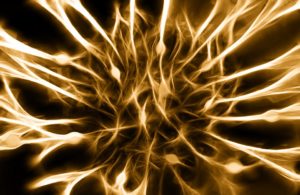How memories are formed, stored, and modified has been one of the key topics in neuroscience studies. It’s fascinating to realize that not only can we enhance our memory through constant practice and exercise, but also alter or eliminate existing memory in some trauma cases. Within the past few years, neuroscientists have even found ways to create fake memories or artificially manipulate memories. All of these lead to a huge question: how reliable is our memory?

Most of us have perhaps heard of the analogy that our brain functions like a computer. Information we perceive through our sensory organs is transduced and processed by various neurons and experiences are accumulated to create memories that are stored in different regions of the brain. As our existential evidence, memories constitute our identities and to certain extent determine who we are as human beings. Scientifically, the formation of memories is facilitated by the dynamic generation and deterioration of synapses that connect different neurons to spike different responses. Put it in a simple way, a new memory is created when neurons that didn’t connect before are wired together in the brain, forming new contacts and synapses. The memory will be strong if it is constantly revisited and the relevant synapses get strengthened by reactivating this particular group of neurons. On the other hand, the memory will gradually fade if these neurons stop firing and the synapses dissemble. This is similar to how we maintain friendships at the macro-level. Throughout our entire life, we have a lot of friends. We make new friends everyday and perhaps also lose some from time to time. Like some friends maintain close relationships because they spend time together more often, some memories stay lucid because of repetitive reminders. Understanding which neurons and synapses store which memory is thus like deciphering a codebook. By genetically labeling neurons and tracing their activities, scientists have made huge progress in decoding this mystery, revealing the possibility of Inception in real life.
A research group led by Dr. Steve Ramirez at Boston University have been the experts in memory studies for years. In 2013, they made a breakthrough of implanting fake memories into the brain of mouse. Published in Science, this study has demonstrated that when neurons in a particular region of the hippocampus get activated artificially through optogentics, a pain-related memory can be recalled without actual pain stimulus. By labeling different neurons in the brain, the researchers were able to identify neurons activated by a particular pain stimulus, a foot shock in this case. Mice exposed to foot shock once were separated into two groups: one would receive a real foot shock again to trigger this pain memory, and the other would be stimulated with light for artificial neuron activation. Using optogentics, the researchers activated the particular pain-responsive neurons with light and compared the response from mice that have received real foot shock. Interestingly, light activation of these neurons produced similar response as the normal pain stimulation, which means both groups of mice were “reminded” of the pain even though only one group actually received it. Dr. Ramirez’s group smartly bypassed the sensory neurons for pain and created this fake memory in their mice. In other words, the researchers tricked the mice to memorize a pain that they weren’t exposed to simply by shining light on them.
Similarly in a followup study published in Nature in 2015, the same group managed to rescue behavioral disorders in mice due to stress by optogenetically activating the rewarding neurons to trigger good memory. Although human brain is a hundred times more complicated than a mouse brain, with the success in manipulating mouse memory, it’s promising that we will have the capacity of interfering with human memories soon. While advancements made in this field will help cure neurodegenerative disorders such as Alzheimer’s, memory altering technologies can also bring up ethical issues and concerns on how reliable our memories are. Without doubts, positive effects in response to rewarding memories can be extremely beneficial to the continuously growing population fighting with depression. On the other hand, if our life is composed of a mixture of fake and authentic memories for various reasons, how would we know what to trust and who we are? As fully conscious human beings, maybe it’s time to ponder on how reliable we want our memories to be.

Peer edited by Nicole Fleming.
Follow us on social media and never miss an article: